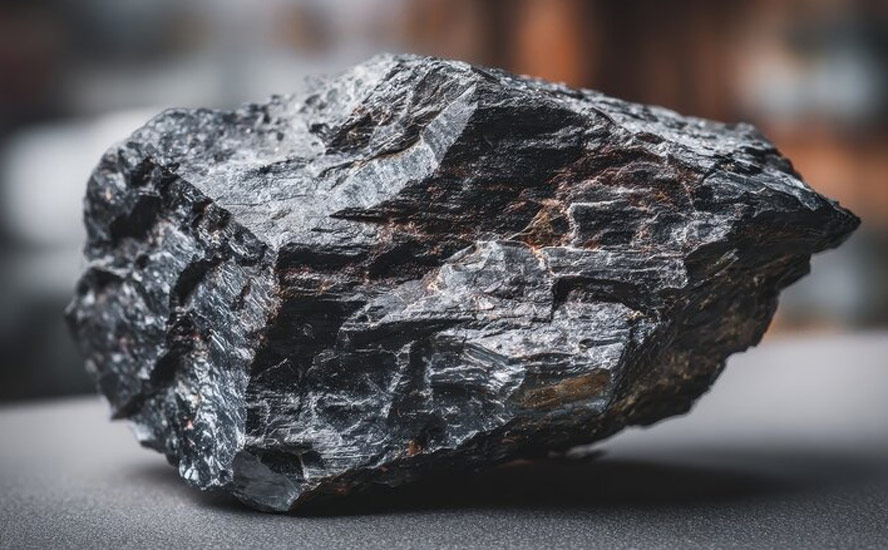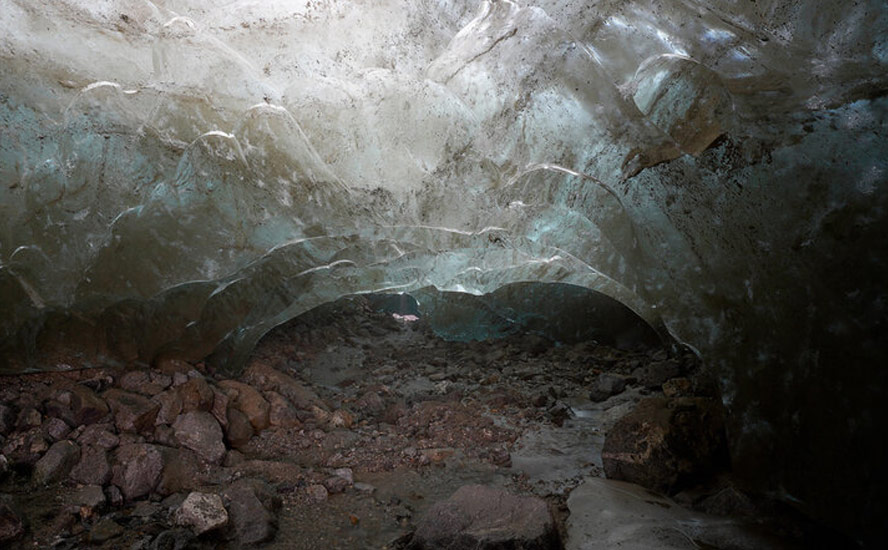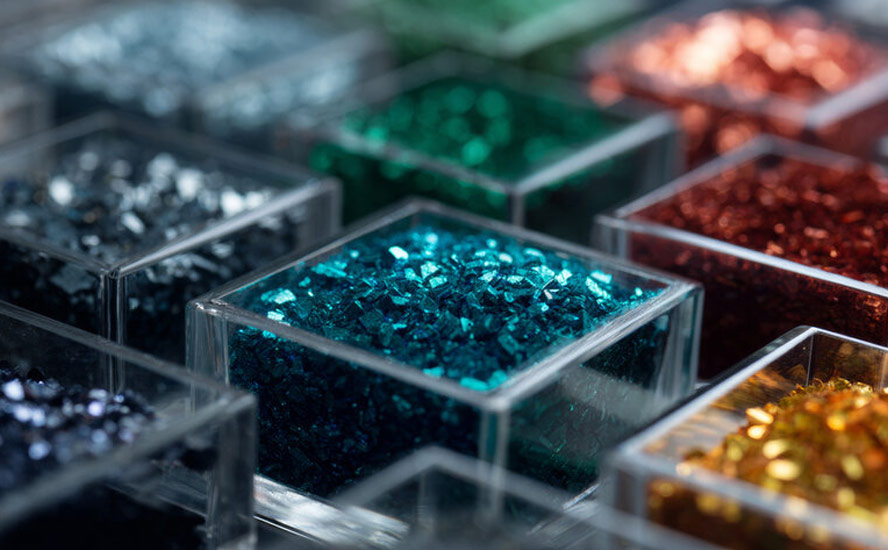America’s graphite vulnerability
2020.10.10
At Ahead of the Herd we’re invested in metals necessary for the inevitable shift from a global transportation system powered by fossil fuels, to one that is fully electric. As sales of electric vehicles continue to climb (also electric buses, trains and e-bikes), among the metals we are most bullish on, are lithium, graphite, nickel, cobalt, manganese and copper. All six are crucial to electrification. Lithium, graphite, nickel, manganese (or aluminum) and cobalt are needed for lithium-ion batteries, and copper is utilized in other parts of an EV, like the electric motor and wiring. An electric vehicle contains four times as much copper as a fossil-fueled model.
Lithium and graphite are indispensable to this shift. There are no substitutes for lithium or graphite and these critical metals are expected to remain the foundation of all lithium-ion EV battery chemistries for the foreseeable future.
LIthium is in the cathode and graphite, or more precisely, spherical graphite, is in the anode. Like the lithium in EV batteries, there is no substitute for the graphite.
The global lithium-ion battery industry is expected to grow at a CAGR of 16.4% from 2020 to 2025, reaching USD$94.4 billion by 2025 from $44.2 billion in 2020. Growth will be driven not only by the need for plug-in electric vehicles and hybrids, but grid storage applications for which the dominant technology is lithium-ion.
Graphite is the second-largest component of lithium batteries by weight, and they contain 10-15 times more graphite than lithium. An average hybrid-gasoline electric vehicle (HEV) carries up to 10 kg of graphite and a plug-in EV has around 70 kg. Every million EVs, which is only about 1% of the new car market, requires in the order of 75,000 tonnes of natural graphite. This represents a 10% increase in flake graphite demand. The need for lithium batteries not only for EVs, but energy storage, handheld tools like drills, and an array of consumer electronics like cell phones and laptops, is almost certain to outstrip supply. The current lithium-ion battery manufacturing capacity currently under construction would require flake graphite production to double by 2025.
Only flake graphite – which can be economically rounded and upgraded to 95.95% purity – can be used as anode material in a lithium-ion battery. However the manufacturing process is expensive and wastes up to 70% of the flake graphite feed. Uncoated spherical graphite therefore sells for up to US$3,000 a tonne, or over 3X the price of large flake graphite.
Currently nearly all graphite processing takes place in China because of the ready availability of graphite there, weak environmental standards, and low costs. However as we have seen with rare earths, a market that China manipulated in its favor following a territorial dispute with Japan in 2010, and more recently, with restricted shipments of personal protective equipment from China during the pandemic (China simply used its monopoly on PPE production to cut exports and supply its own population), being overly reliant on foreign suppliers is dangerous.
The United States (and Canada) needs secure, cost-competitive and environmentally sustainable sources of graphite, and that means developing graphite deposits into mines.
Composition
There are two types of graphite: natural and synthetic. Synthetic graphite is made by treating amorphous carbon materials at high temperatures. In the US the primary feedstock is calcined petroleum coke and coal tar pitch. Manufacturing synthetic graphite costs up to 10X more than natural graphite, therefore it is less appealing for most applications.
The natural graphite market is 1-1.2 million tonnes per year and consists of three different forms of graphite – flake, amorphous and lump. Historical applications primarily use amorphous and lump graphite, however most new technologies and applications require large flake graphite. Of the approximately 1.2 million tonnes of graphite that are processed each year, just 40% is flake.
Uses
Graphite has long been used in the aviation, automotive, sports, steel and plastic industries, as well as in the manufacture of bearings and lubricants. Graphite is an excellent conductor of heat and electricity, is corrosion- and heat-resistant, and is strong and light.
Autos and steel
Currently, the automotive and steel industries are the largest consumers of graphite with demand across both rising at 5% per annum. The steel industry uses graphite as liners for ladles and crucibles, in the bricks which line blast furnaces, and to increase the carbon content of steel. Graphite has already replaced asbestos in automotive brake linings and pads and is used for gaskets and clutch materials. Sparks plugs are also made incorporating graphite.
Newer applications – flexible graphite sheets, graphene, lithium-ion and vanadium batteries, fuel cells, nuclear, wind and solar power – are requiring more and more graphite production. Graphene seems to be a wonder material and a lot of time, effort and money is being spent researching it.
Flexible graphite sheets
Graphoil flexible graphite is one of the fastest-growing graphite markets. It is desirable for compression packing and gaskets, whose ability to seal comes from filling gaps through which fluid might flow.
Nuclear power
Graphite plays a key role in many current, and future, nuclear reactor designs. In the INL-led Next Generation Nuclear Plant (NGNP) and other proposed gas-cooled reactors, temperatures are expected to reach as high as 1,000°C in their cores. Graphite, having a higher melting point than steel, doesn’t burn until 3,000°C. Because graphite has such heat-absorbing capacity, it’s also used to keep nuclear fuel at safe temperatures during unexpected events. As an aside, graphite is also used as a heat sink in computers.
China’s Pebble Bed Reactors (PBR) are a graphite-moderated, gas-cooled nuclear reactor. The base of the PBR’s design are spherical (billiard ball-sized) fuel elements called pebbles. In the PBR, thousands of pebbles are amassed to create a reactor core. The pebbles are made of pyrolytic graphite (a protective graphite coating which moderates the pace of nuclear reactions) and they contain thousands of micro-fuel particles called TRISO particles.
Substantial amounts of graphite are required to charge the reactor at startup – 3,000 tonnes and a percentage of the balls must be replaced each year as the fuel is spent, necessitating a further 600 to 1,000 tonnes of graphite each year of operation. A 10-MW Pebble Bed Reactor prototype has operated in China since 2003, with more planned.
Fuel cells
The two types of fuel cells under development – phosphoric acid fuel cell (PAFC) and proton electrolyte membrane fuel cell (PEMFC) – rely heavily on graphitized carbon. PAFCs are for stationary power generation (primary or backup power for remote locations such as cell phone towers), whereas PEMFC’s have attracted widespread interest for use in transportation applications.
Fuel cell technologies rely heavily on graphite – the PEMFC requires 80-100 pounds of graphite per vehicle.
The USGS says large-scale fuel cell applications are being developed that could consume as much graphite as all other uses combined – a bold statement.
Solar thermal collectors
The biggest limitation of solar or photovoltaic (PV) panels is that they can use only a fraction of the sunlight that hits them. The rest of the sunlight turns into heat which actually hurts the performance of the panels.
An alternative that can make use of all of the sunlight, including light frequencies PVs can’t use, is the solar thermal collector. These devices collect heat that is used to boil the water to make the steam, which drives the turbine creating the electricity.
Graphite nanoparticles are very efficient heat collectors.
Vanadium redox batteries
When the sun doesn’t shine and the wind doesn’t blow, neither solar nor wind plants generate electricity. These green energies need batteries to store the excess energy they are able to produce under optimal conditions. The vanadium redox battery (VRB) could be the perfect answer as they:
- Have unlimited capacity simply by increasing the size of their storage tanks.
- Can be left completely discharged for long periods of time with no ill effects.
- Have low maintenance requirements.
- Can be recharged by simply replacing the electrolyte.
- Have a nominal environmental footprint.
VRB’s also require almost 300 tonnes of flake graphite per 1,000 megawatts of storage capacity.
Graphene

If you take a very close look at a graphite pencil lead, you will see layer upon layer of carbon atoms – multiple two-dimensional planes that are loosely bonded to their neighbors.
The reason graphite works so well as a writing material, and industrial lubricant, is because the layers of atoms slip easily over one another – the layered structure facilitates easy cleavage along the planes.

Each of those single layer of atoms is graphene.
Separating the individual layers of graphite sets the electrons free and allows carbon to behave differently.
Graphene has unique combinations of optical, electrical and mechanical properties:
- Astonishing electrical conductivity – Graphene has the highest current density (a million times that of copper) at room temperature; the highest intrinsic mobility (100 times more than in silicon); and can carry more electricity more efficient, faster and with more precision than any other material.
- Graphene also beats diamonds in thermal conductivity – it’s better than any other known material.
- It is the thinnest and strongest material known to man – 200 times stronger than steel, almost invisible and weightless, and stretches like rubber. Graphene can stretch up to 20% of its length – and yet it is the stiffest known material, even stiffer than diamonds.
- Graphene is the most impermeable material ever discovered.
Graphene is transparent in infra-red and visible light, absorbing just 2.3% of light that lands on it. But with your naked eye, you can see a single layer of graphene laid on a blank piece of white paper.
Indium Tin Oxide (ITO), the current touch screen material of choice, absorbs 10% of incident light, but it’s quite brittle, the exact opposite of graphene. Graphene is ideal for use in touch screens.
According to some reports the world has only a few years of ITO reserves remaining, and prices already exceed US$700,000 per tonne.
Graphene has no band gap – everything is accepted.
What this means is that graphene solar panels have a huge advantage over silicon solar panels – graphene can absorb light from all over the solar spectrum, whereas silicon is confined to just certain frequencies.
That makes graphene solar panels much more efficient than any other material – instead of waiting 10-12 years for payback it might come as quickly as 5 years.
It is possible to induce a small band gap in graphene by doping it, which means graphene can be used as a transistor – you need the band gap if you want to be able to turn the transistor off.
Spintronics is a technology for controlling not only individual electronics, but also their spin, this increases the amount of information that can be stored per electron – data is stored in the spin of an electron, not its presence. Since graphene has a long spin diffusion length, the technology promises to increase the efficiency with which devices consume power and increase data storage capability.
The mean free path is the distance an electron can travel freely without bumping into something, or having its path disrupted by scattering – both cause resistance which means heat is generated.
In graphene, the mean free path is 65 microns — long enough that electronic components could be made that would operate at ambient temperatures with virtually no resistance.
We’re talking ambient temperature-unimpeded conduction of electrons, ie., superconductivity at room temperature.
Graphene is so impermeable, not even helium atoms can squeeze through. Highly sensitive gas detectors can be manufactured because the smallest quantity of a gas will get caught in its lattice. producing an electrical signal that flags the presence of the chemical.
Medical imaging devices using graphene that won’t do the harm X-rays cause are possible, as are strain sensors – when you pull or push the strain can be monitored – this could be useful for buildings in earthquake-prone areas or in airplane wings.
If you pass a strand of DNA through a sheet of graphene with a small gap in it, the electrical properties of graphene change on exposure to each base pair. Because graphene is 2D, it can “read” one base at a time, making it much more accurate than anything used today.
All the chemical derivatives of graphene are useful. You can dissolve graphene and the solutions (fluorographene, graphene oxide, hydrogenated grapheme) have applications in printable electronics that are already 10 times better than current state-of-the-art technology.
Criticality
Ten years ago the European Commission included graphite among the 14 materials it considered high in both economic importance and supply risk. The British Geological Survey listed graphite as one of the materials to most likely be in global short supply.
The US has also declared graphite a critical material.
Graphite is included on a list of 23 critical metals the US Geological Survey has deemed critical to the national economy and national security.
In 2017 President Trump signed an executive order to encourage the exploration and development of new US sources of these metals. The following year, in May 2018, the US Government’s Critical Minerals List was published. It includes flake graphite as one of the “Listed Minerals”. The report states that graphite is:
- One of 14 Listed Minerals for which the U.S. is 100% import-dependent;
- One of 9 Listed Minerals meeting all 6 of the industrial/defense sector indicators identified by the U.S. Government report;
- One of 4 Listed Minerals for which the U.S. is 100% import-dependent while meeting all 6 industrial/defense sector indicators.
- One of 3 Listed minerals which meet all industrial/defense sector indicators – and for which China is the leading global producer and leading U.S. supplier.
The report also states that,
“China is by far the largest producer of natural graphite, accounting for roughly two-thirds of world production. Only 4 percent of the world’s natural graphite comes from North America, with no U.S. production in decades. Although natural graphite was not produced in the United States in 2016, about 98 U.S. firms, primarily in the Northeastern and Great Lakes regions, consumed graphite in various forms from imported sources for use in brake linings, foundry operations, lubricants, refractory applications, and steelmaking. Graphite’s use in rechargeable batteries, as well as technologies under development (such as large-scale fuel-cell applications), could consume as much graphite as all other uses combined.”
Market
China, Brazil and Mozambique are responsible for most graphite mining and processing, with China producing the lion’s share at around 70%. China’s production is about 40% amorphous and 60% flake.
It’s interesting to note, as the USGS does, that while China does produce some large flake graphite, the majority of its production is smaller, in the +200-mesh range. North America produces just 4% of the world’s graphite supply, from mines in Canada and Mexico.
China imports a significant amount of North Korea’s large flake graphite production, raising doubts in regards to China’s abilities to ramp up its own graphite supply. Indeed, China has already taken steps to retain its graphite resources by restricting its export quota – the country imposed a 20% export duty, a 17% VAT and also closed state-owned enterprises.
“The days of cheap, abundant graphite from China are over.” Industrial Minerals Magazine
Large graphite deposits are being developed in Madagascar, northern Mozambique, Namibia, and south-central Tanzania. The world’s largest graphite mine, Syrah Resources’ 50-year Balama operation in Mozambique, achieved commercial production in January, 2019.
No US natural graphite production was reported to the USGS in 2019, but two companies – one in Alaska, the other in Alabama – were noted as developing graphite deposits.
According to the USGS, in 2019 the US imported 58,000 short tons, of which two-thirds (65%) was high-purity flake graphite, 34% was amorphous, and 1% was lump and chip graphite. The top importers, in order, were China, Mexico, Canada, Madagascar, Brazil and Mozambique.

It’s thought that the increased use of lithium-ion batteries could gobble up well over 1.6 million tonnes of flake graphite per year (out of a total 2019 market, all uses, of 1.1Mt) – remember, only flake graphite, upgraded to 99.9% purity, and synthetic graphite (made from petroleum coke, a very expensive process) can be used in lithium-ion batteries. As stated above, the USGS believes that large-scale fuel cell applications are being developed that could consume as much graphite as all other uses combined. We have clearly come to the point when much more graphite needs to be discovered and mined. Tesla’s Nevada Gigafactory alone, consumes around 35,000 tons of spherical graphite per year. (in 2019 the US imported 58,000 tons, of which 65% was high-purity flake graphite)
Global graphite consumption has been increasing steadily every year since 2013, although last year there was a reduction of 14%. Roskill expects total graphite demand over the next 10 years to grow around 5 to 6% per year.
Conclusion
Question is, can the mining industry crank out 5-6% more graphite yoy to match this demand? There is reason to be skeptical. Between 2018 and 2019, world mine production actually declined by 20,000 tonnes, or 1.8%.
Let’s assume the industry can meet the demand. Where is the graphite going to come from?
Currently there are no producing graphite mines in the United States, and only 12,000 tonnes a year is being mined from two existing facilities in Canada.
Richard (Rick) Mills
aheadoftheherd.com
subscribe to my free newsletter
Ahead of the Herd Facebook
Legal Notice / Disclaimer
Ahead of the Herd newsletter, aheadoftheherd.com, hereafter known as AOTH.
Please read the entire Disclaimer carefully before you use this website or read the newsletter. If you do not agree to all the AOTH/Richard Mills Disclaimer, do not access/read this website/newsletter/article, or any of its pages. By reading/using this AOTH/Richard Mills website/newsletter/article, and whether or not you actually read this Disclaimer, you are deemed to have accepted it.
Any AOTH/Richard Mills document is not, and should not be, construed as an offer to sell or the solicitation of an offer to purchase or subscribe for any investment.
AOTH/Richard Mills has based this document on information obtained from sources he believes to be reliable but which has not been independently verified. AOTH/Richard Mills makes no guarantee, representation or warranty and accepts no responsibility or liability as to its accuracy or completeness. Expressions of opinion are those of AOTH/Richard Mills only and are subject to change without notice. AOTH/Richard Mills assumes no warranty, liability or guarantee for the current relevance, correctness or completeness of any information provided within this Report and will not be held liable for the consequence of reliance upon any opinion or statement contained herein or any omission. Furthermore, AOTH/Richard Mills assumes no liability for any direct or indirect loss or damage or, in particular, for lost profit, which you may incur as a result of the use and existence of the information provided within this AOTH/Richard Mills Report.
AOTH/Richard Mills is not a registered broker/financial advisor and does not hold any licenses. These are solely personal thoughts and opinions about finance and/or investments – no information posted on this site is to be considered investment advice or a recommendation to do anything involving finance or money aside from performing your own due diligence and consulting with your personal registered broker/financial advisor. You agree that by reading AOTH/Richard Mills articles, you are acting at your OWN RISK. In no event should AOTH/Richard Mills be held liable for any direct or indirect trading losses caused by any information contained in AOTH/Richard Mills articles. Information in AOTH/Richard Mills articles is not an offer to sell or a solicitation of an offer to buy any security. AOTH/Richard Mills is not suggesting the transacting of any financial instruments but does suggest consulting your own registered broker/financial advisor with regards to any such transactions
Legal Notice / Disclaimer
Ahead of the Herd newsletter, aheadoftheherd.com, hereafter known as AOTH.Please read the entire Disclaimer carefully before you use this website or read the newsletter. If you do not agree to all the AOTH/Richard Mills Disclaimer, do not access/read this website/newsletter/article, or any of its pages. By reading/using this AOTH/Richard Mills website/newsletter/article, and whether you actually read this Disclaimer, you are deemed to have accepted it.



























